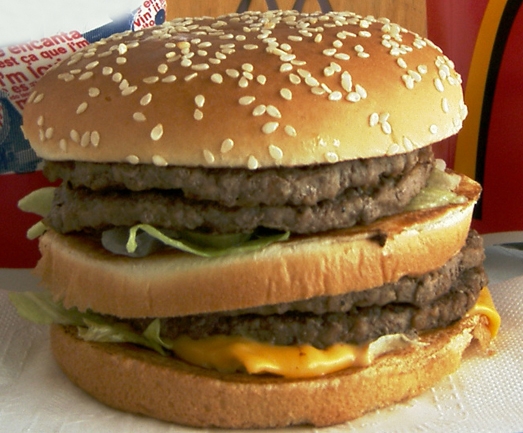 I have an idea for The Economist Group, which has assigned six staffers from various divisions to develop an innovative web based product for the company that can pull content from any of its properties. They're blogging about their progress on the Project Red Stripe blog and soliciting ideas from the outside world. Since this group is developing an Internet based product, it better take advantage of what the web has to offer when it comes to interactive features. My idea is a super-sized Big Mac Index section with community and interactive features that personalizes and expands the scope of the index.
I have an idea for The Economist Group, which has assigned six staffers from various divisions to develop an innovative web based product for the company that can pull content from any of its properties. They're blogging about their progress on the Project Red Stripe blog and soliciting ideas from the outside world. Since this group is developing an Internet based product, it better take advantage of what the web has to offer when it comes to interactive features. My idea is a super-sized Big Mac Index section with community and interactive features that personalizes and expands the scope of the index.
The Big Mac Index is an understandable way to present currency exchange-rate differences around the world since a Big Mac is a fast food item that is virtually the same to many of us. Thus, it is simple to understand that Argentina's economy is relatively weak compared to the United States' economy if the Big Mac is significantly cheaper in Buenos Aires than it is in Boise.
That seems simple enough, but why not flesh it out more?
The price of a hamburger depends upon many factors including: the price of ingredients, labor costs, expense of complying with health regulations, and shipping expenses. These factors are fertile grounds for a myriad of stories that are both directly and indirectly related to exchange-rates and opportunities for normal folk to participate in the Big Mac Index coverage.
For instance, a couple of years ago here in the United States a series of hurricanes destroyed a significant portion of the country's tomato crops; this drove the cost of tomatoes up. In some cases, hamburger joints only put tomatoes on burgers upon request while others charged extra for the item. During such a situation The Economist could analyze how weather affects food prices, and fast food junkies from the United States could report how it affected the price of hamburgers — especially the Big Mac — where they are and explain if the price changes cause them to adjust their eating habits or alter their restaurant preferences. Big Mac correspondents could report via e-mail or on-site comments.
Beyond this, fast food workers — likely anonymously — could also explain how they feel about their wages. Do they want higher pay? Can they unionize? Concerning culture, how are fast food employees viewed in their society? What are the requirements for them to get a fast food job? Are they working at sub wage levels since they're working as part of an educational experience like some secondary Mexican students do? What are their working conditions like? All these questions can involve wages in fast food restaurants, and exploring this can help explain the price variance of Big Macs as wages and working conditions differ from country to country.
What happens if a country passes and enforces more stringent health codes for restaurants? Will increased sanitary standards drive up the price of Big Macs? Are people in this country willing to pay higher prices for a safer burger? This is a great situation for The Economist to explore how public policy affects business, and people can discuss via comments, e-mails, or forums the new policy and its effects on food prices.
There are many other ways that The Economist can flesh out its Big Mac Index to capture a wider picture of economic, social, and cultural news. By harnessing the interactive features of the Internet, it can also gather information from its readers, normal folk, and people who work in the global fast food industry from all over the world to expand and personalize the scope of the index. Let's not forget groovy graphics either.
Sign up today to have our latest posts delivered straight to your inbox.